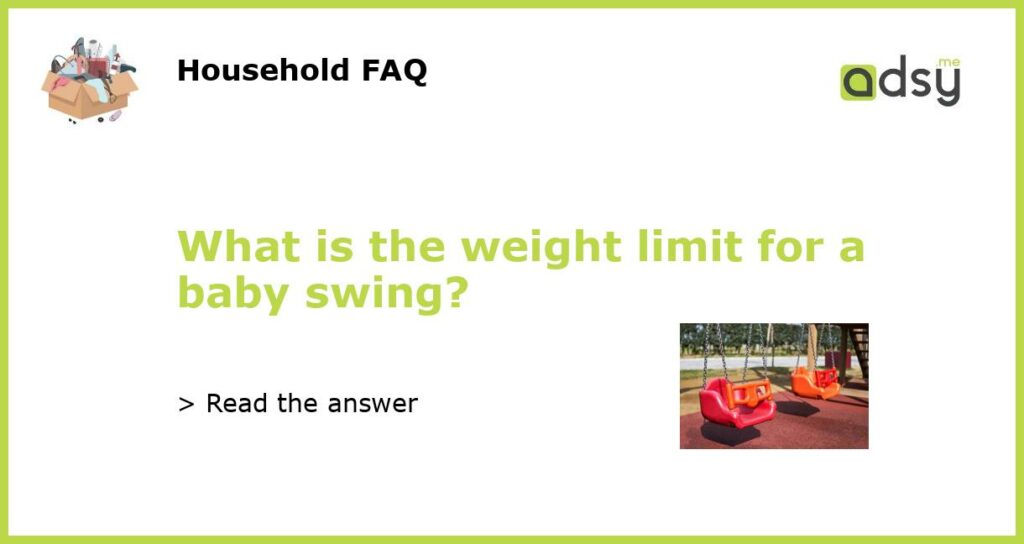Understanding the Weight Limit for Baby Swing
A baby swing can be an excellent investment as it can help soothe a fussy baby and give parents a break from carrying the infant all day long. When it comes to choosing a baby swing, one of the essential specifications to consider is the recommended weight limit.
What is the Appropriate Weight Limit for a Baby Swing?
The weight limit on a baby swing varies depending on the manufacturer and the model. However, most baby swings have a weight limit of around 25 to 30 pounds. This means that as soon as your baby reaches 25 to 30 pounds, they will have outgrown the swing and should no longer be put in it. Keep in mind that exceeding the weight limit can be dangerous and increase the risk of injuries.
Why is the Weight Limit Important?
The weight limit is significant because it ensures that the baby swing can safely hold the weight of the child. If you put a baby who is too heavy for the swing, it can cause the swing to malfunction, resulting in accidents or injuries. Moreover, if the swing’s seat is too small for heavier babies, it can create discomfort and pain for the child.
How to Choose the Right Baby Swing
When selecting a baby swing, consider the weight limit, your child’s weight, and the swing’s size and design. Ensure that the swing you choose can accommodate your baby’s weight and size comfortably. It’s also essential to check the swing’s stability, durability, and safety features to prevent accidents or injuries.
Remember, a baby swing can be a valuable tool to help soothe and entertain your little one, but it’s crucial to adhere to the weight limit guidelines. An overweight baby can cause the swing to malfunction, putting the baby at risk of accidents or injuries. Always follow the manufacturer’s recommendations, and when in doubt, consult with your pediatrician.






